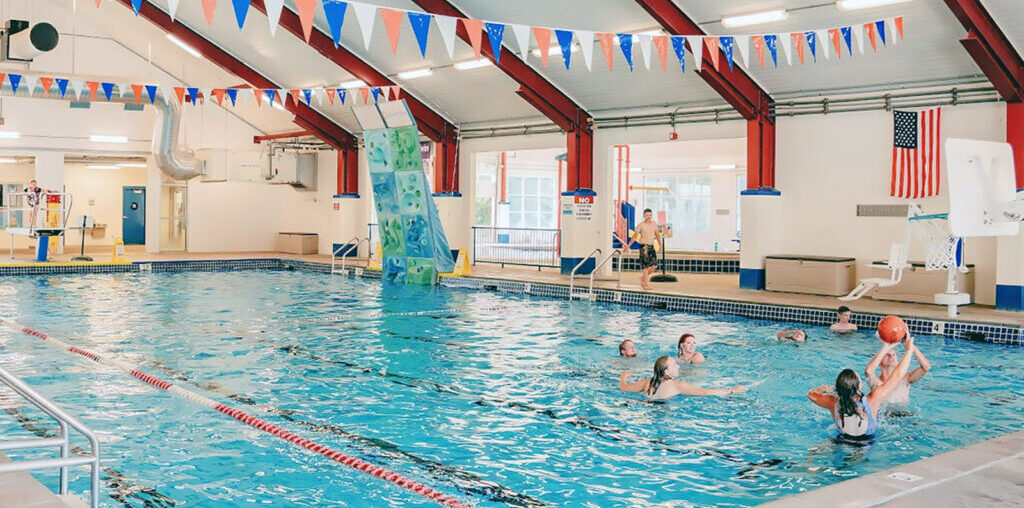Owning a swimming pool is a dream come true for many homeowners. However, this dream can quickly turn into a nightmare when a leak develops. While swimming pool leak detection can be a complex and technical process, many leaks are often linked to simple, inexpensive fixes. As seasoned professionals, we often receive calls from homeowners concerned about leaks, only to discover that the issue can be resolved quickly and affordably.
Water loss from your pool is natural due to factors like evaporation and splash-out. The question, however, is how much water your pool is losing. If you’re adding more than two inches of water every week, you may have a leak.
To help you save both time and money, we’ve compiled some DIY swimming pool leak detection tips to help you determine the seriousness of the problem.
Is Your Pool Really Leaking?
Before diving into potential fixes, the first step in swimming pool leak detection is confirming whether your pool is losing water due to a leak. Evaporation is often mistaken for a leak, so it’s important to verify the extent of water loss.
You can perform a simple bucket test to help determine the cause of water loss. Here’s how it works:
- Place a bucket on a step of the pool.
- Ensure the water levels inside and outside the bucket are equal.
- Mark the water level in both the pool and the bucket using a non-permanent marker or water-resistant tape.
- Wait for two days and then compare the water levels.
If the water level in the bucket and the pool remains the same, evaporation is the culprit. However, if the pool has lost more water than the bucket, there’s likely a leak somewhere in the pool.
Is Your Pool Equipment to Blame?
Sometimes the leak may stem from the pool equipment itself. If your pool loses water when the pump is running, there may be a leak in the pressure side of the filter pump. Here are a few steps to check:
- Look for drips in the backwash line.
- Inspect areas downhill from the pool for signs of underground leaks or weepers (water leaking through concrete).
- Examine the yard around the plumbing for soft spots.
If the leak occurs only when the pump is off, the issue may be related to the suction side (the part that pulls water into the pump). Check for air bubbles in the return line or air buildup inside the filter tank.
Is the Leak in the Pool Shell?
If the pool continues to lose water even when the equipment is turned off, there may be a leak in the pool’s shell. Common areas to check for Swimming Pool Leak Detection include:
- Cracks in the plaster.
- The tile line and skimmer area, which often separates from the pool and causes leaks.
To confirm, perform a dye test. Use pool test dye around suspected cracks while the equipment is off. If the dye is sucked into the crack, you’ve found the source of the leak. Fortunately, fixing minor cracks is simple with silicone or pool putty.
What About Vinyl Liner Pools?
For vinyl liner pools, the leak detection process is slightly different. Start by looking for sinkholes in the sand beneath the liner, or separations around the skimmer, cleaner line, returns, steps, and pool lights. Vinyl liners can develop pinhole leaks, especially as they age, so you may need to inspect the entire pool for small leaks.
To check for leaks, consider using a snorkel or diving mask to make the process easier. If you find a tear in the liner, you can easily patch it using a vinyl sealant or a patch kit.
What If the Leak Is Underground?
An underground plumbing leak can be one of the most challenging and expensive problems to fix. While rare, leaks in underground plumbing can occur due to cracked pipes or connectors, particularly under the skimmer or pool deck.
To check for underground leaks, power off the filter pump and plug all the pool’s lines. If the pool still loses water, there’s likely an underground leak. If the leak stops, begin removing plugs one by one and observe when the leak resumes. This process can help you identify the specific pipe responsible for the leak, but for thorough testing, you may need to consult a professional for pressure testing.
Is DIY Testing Worth It?
While DIY swimming pool leak detection methods can help you identify the source of the problem, the process can be time-consuming, especially for hard-to-detect leaks like those in underground pipes. Sometimes, it’s more efficient and cost-effective to call in the experts.
At Guardian Angel Inspections, we offer professional pool inspection services that can quickly pinpoint leaks and measure the exact amount of water loss. With our advanced equipment, we can determine if there’s a leak in just 10 minutes, saving you time and stress.
If you’re dealing with a possible pool leak, don’t hesitate to reach out. Give us a call at 561-512-7854 or fill out our contact form, and let our experts handle the heavy lifting. We’ll ensure your pool stays in top shape without the hassle of DIY testing!

